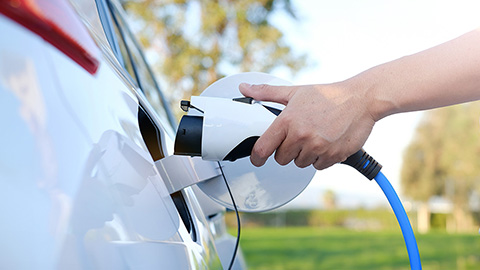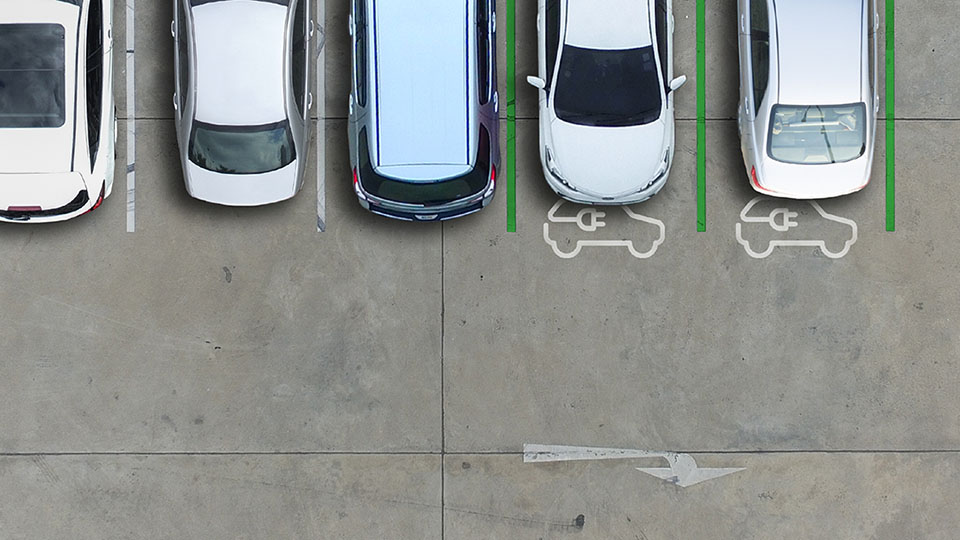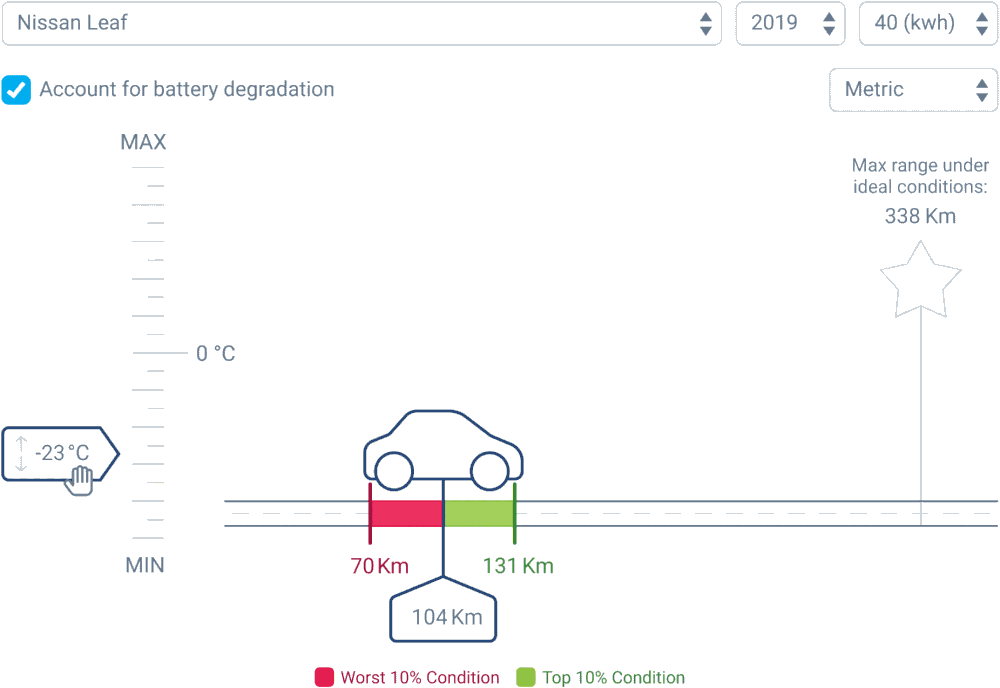
New insight on common EV challenges
Published on December 2, 2020 in Electric Vehicles by Geotab Team | 2 minute read
Table of contents
Geotab has carried out real-world research to help answer some of the pressing issues that face the EV industry today. Here’s a snapshot.
A common concern with electric vehicles (EVs) is whether the battery will last for the lifetime of the vehicle. This is why Geotab developed a tool to help you measure battery degradation over time. The tool allows you to select a vehicle model and year to view how that battery will likely degrade over its lifetime. Battery degradation is the ability to store energy, accept and deliver power measured by the state of health percentage.
From telematics data, we analysed over 6,300 fleet and consumer EVs, 1.8 million days of data, and 64 makes, models and years to gain insight into real-world conditions that influence the battery health of EVs.
See also:
To what degree does temperature impact EV range?
The challenges EV owners face when they live in multi-dwelling units
What did we observe?
When looking at the average decline across all makes and models, we found a 2.3% capacity loss every year. This means that if you purchase an EV today with a 150-mile range, losing about 17 miles of accessible range after five years is unlikely to impact your day-to-day needs. This provides confidence to fleet owners that EV batteries will not only last, but if the observed rates are maintained, the vast majority of batteries will outlast the usable life of the vehicle.
Interestingly, we did find a notable difference in battery degradation across the makes and models. There was also a material impact depending on the charging types. Consistent use of DC fast charging, often used for fast top-ups, means high currents being transferred to the battery. This can result in battery stain. This is why even OEMs suggest limiting the use of DC fast charging to prolong the lifespan of the battery.
How does temperature impact battery range?
When selecting an EV for purchase, the range is a crucial consideration. We know the range listed in the vehicle specification is often a guideline. In reality, this can give a different picture.
A number of factors can impact the range of an EV. These include:
- Driver behaviour
- Speed
- Topography
- Temperature
These factors all impact the vehicle’s running efficiency, and as a result, it’s range.
This is why we developed the Temperature Tool for EV Range from the analysis of 4,200 vehicles. Its purpose is to help us understand the relationship between temperature and vehicle range. With this tool you can drill down by make, model and battery size. This can help you understand what the expected range of your vehicles is and confirm you have the right vehicle for the job.
Through the data collected for this tool, we found that the optimal temperature for maximum EV range is 21 degrees celsius.
Moving away from this temperature will harm the usable day-to-day range. If the car temperature is low, as a driver you may want to turn on heating to ensure it stays in optimal range. If it’s the opposite (too hot) you may want to turn on the AC. Both scenarios draw energy from the battery.
Top tips for maximum battery range
There are many ways to help increase your EV’s batter range. Many of these methods are directly related to heating and cooling your vehicle.
Below are a few examples:
- Use alternatives to vehicle heating and cooling. Options like heated seating use considerably less energy than turning on in-cabin heating.
- Prepare your vehicle in advance. While the vehicle is still charging, turn on the heaters to warm the vehicle up before the trip begins.
- Keep the vehicle plugged in. Plugged in isn’t the same as charging. Keeping the vehicle plugged in when not in use allows the internal management of the battery temperature to go to work. Thus can help to prolong the life of the battery.
Conclusion
Battery degradation doesn’t have to be a challenge for EV drivers. There are many ways to measure and control your EVs battery performance. By using Geotab’s Temperature Tool for EV Range, you can gauge your current, or even future, EV model’s battery degradation over time. You can also engage in many different methods to reduce battery degradation by smartly monitoring temperature in your vehicle.
To learn more about Geotab and EVs, visit our Electric Vehicle solutions page.
If you liked this post, let us know!
Disclaimer
Geotab's blog posts are intended to provide information and encourage discussion on topics of interest to the telematics community at large. Geotab is not providing technical, professional or legal advice through these blog posts. While every effort has been made to ensure the information in this blog post is timely and accurate, errors and omissions may occur, and the information presented here may become out-of-date with the passage of time.
Subscribe to the Geotab Blog
Sign up for monthly news and tips from our award-winning fleet management blog. You can unsubscribe at any time.
Other posts you might like

Get to know the advantages of electric cars
November 17, 2023

A successful electric fleet strategy starts with optimising fleet operations
August 23, 2023

To what degree does temperature impact EV range?
February 6, 2023

Digging deeper into how temperature and speed impact EV range
February 6, 2023
